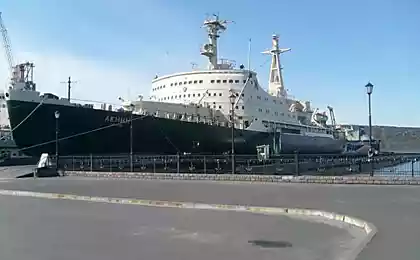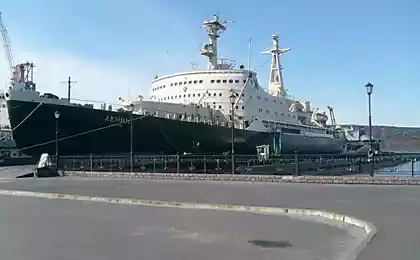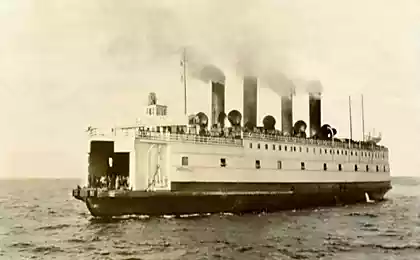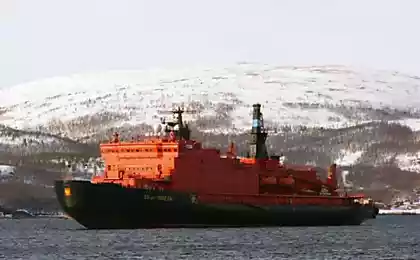1782
The icebreaker "Krasin" (29 photos)
In the early XX century, Russia has been a recognized leader in the development of the Arctic Ocean. Extensive trade routes, vast undeveloped areas bordering the North Sea and Arctic expeditions - all this required the development of maritime transport, the ability to cope with the harsh Arctic conditions and ensure the fulfillment of the tasks for the development of the Russian North. It is for this reason, the Russian icebreaker fleet appears. For half a century the firstborn of the Russian icebreaker fleet "Ermak" and "Svyatogor" was the most powerful ships of this class in the world. "Svyatogor" which would later be renamed the "Krasin", improves the structure of the first Russian icebreaker "Ermak" and for decades defined the general line in the development of domestic ledokolostroeniya. For almost 70 years of his working life, he will enter a lot of historical milestones in his logbook - flooding, and then rise from the seabed; Arctic expedition rescue Umberto Nobile and wire Allied convoys during the Second World War; passage of the northern route to the United States and 885-minute daily circumnavigation. In 1980, the icebreaker "Krasin", put on eternal parking in Leningrad, becoming ship-museum, and the current date ...
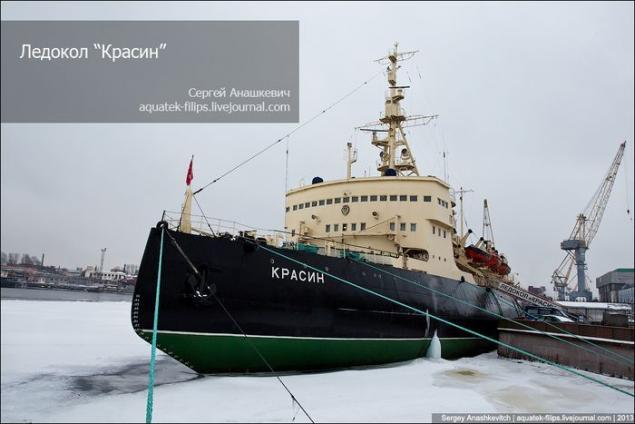
The icebreaker "Krasin" was named in the construction of "Svyatogor". By the end of the first decade of the twentieth century a Russian Arctic icebreaker "Ermak" is not enough to ensure that work in the Arctic. "Ermak" for a long time had no equal among the icebreakers in strength and power. In 1911 - 1912 years on the initiative of the Baltic Fleet Commander Vice-Admiral N. O. Essen question was raised about the need to create the same type of second icebreaker. Then it was developed and terms of reference for the construction of the vessel, but the high cost of the project did not allow the leadership of the Ministry of Marine to place this order. However, in early January 1916 Russia has returned to the issue and it was decided to build an icebreaker with the three screws and a capacity of 10,000 hp, the ability to overcome the ice up to 2 meters thick and in the same year was awarded a contract with the British company "Sir Armstrong Whitworth & Co ". New icebreaker "Svyatogor" was built taking into account operating experience "Ermak" and several of his superior tactical and technical data.
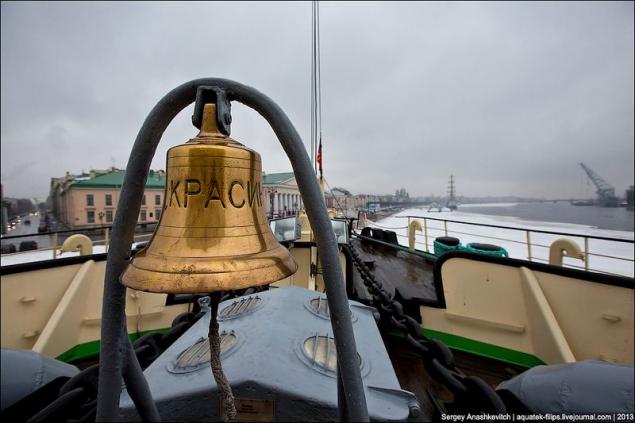
Work on the construction of icebreakers were rapidly. January 12 was ordered material for the keel, and by May had already been collected by one-third the mass of the body, fully developed drawings of the internal arrangement of ship spaces. Just a few months, August 3, the launching of the ship into the water, and two days later the icebreaker escorted eight destroyers towed from Newcastle to Middlesbrough, where he began to put steam engines. October 1, 1916 "Svyatogor" was enrolled in the list of Russian navy in the sea class icebreakers, and March 31, 1917 on the icebreaker St. Andrew's flag was raised. "Svyatogor" was enrolled in the fleet of the Arctic Ocean. Total for the construction, sea trials, intake procedures and enrollment into operation new icebreaker took ... a little more than a year. This is the beginning of the XX century.
It takes only a year and 1 August 1918, the icebreaker "Svyatogor" decide ... flood on the sea route to Arkhangelsk, to block the way for the invaders to the important port of proletarian Russia. After some time, the British raised the Russian icebreaker, and it continues to carry out its functions, but under the English flag.
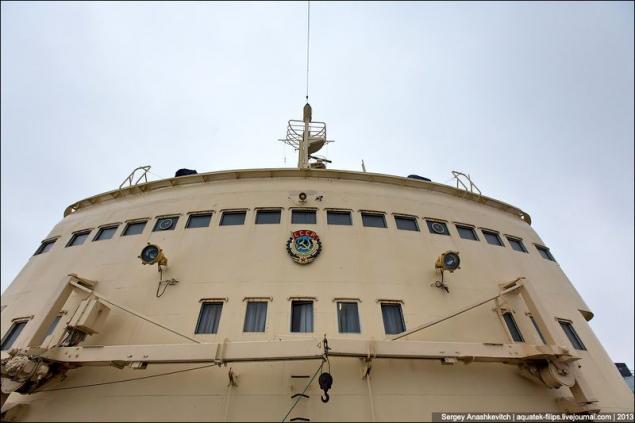
In 1921, "Svyatogor" bought by the People's Commissariat of Foreign Trade of the RSFSR with the personal participation of the British envoy L.B.Krasina and returns to service in the Russian Navy, and after 7 years it will be renamed in honor of Leonid Krasin
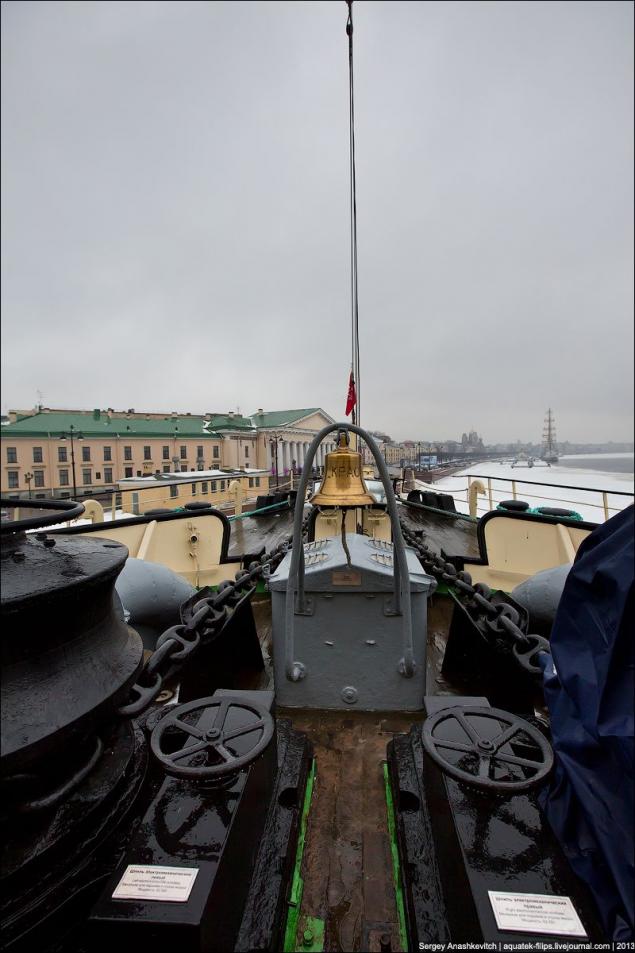
In 1928, the icebreaker "Krasin" became world famous - the same year he took part in the rescue of the Arctic expedition of Umberto Nobile who survived the disaster of the airship "Italia". In 1928, an expedition of 16 people headed by Umberto Nobile took a flight to the North Pole on the new airship, named in honor of his country - "Italy". The airship was launched from Svalbard May 11, 1928, flew over the Pole and landed safely in Alaska. The crew then subdued the North Pole, and "Italy" lay in the opposite direction, and on May 25, communication with the airship suddenly cut short. About what happened, the whole world learned only after 9 days. The crew consisted of 16 people, among them were two foreigners: Swedish geophysicist F. Malmgren and Czech physicist F. Beguonek. To the place of the tragedy began to promote among the heavy ice ships under the flags of different countries, flew airplanes with the international crew on board. In total, the rescue operation involved at least one and a half thousand people - nothing like this has not happened in the Arctic. It was the first in the history of mankind an international rescue operation, which involved 18 ships and 21 aircraft from six countries. Norwegian scientist, once a friend and associate, and then a rival and foe Nobile, Roald Amundsen to learn about the disaster, immediately went to the rescue of polar explorers. Unfortunately, the rescue mission was not without casualties. Killed while returning home three Italian pilot was missing and the French-Norwegian crew seaplane "Latham-47", carrying the Roald Amundsen. Nobile himself from the camp brought a Swedish pilot Lundborg, who managed the under-ice. However, the second flight Lundborg was not as successful. The plane crashed, and he was waiting for the pilot to help a drifting ice floe. Lundborg was able to save only two weeks later. The rest of the group was rescued by crew of the icebreaker "Krasin". In the memory of the rescue expedition on the icebreaker "Krasin" kept the shell of the airship "Italia" Umberto Nobile
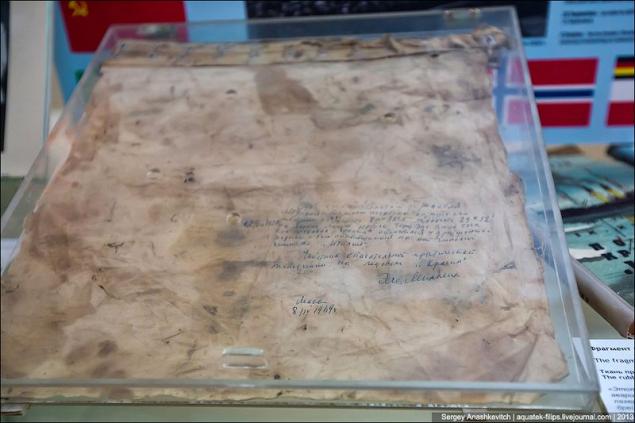
Since the beginning of the war icebreakers steel warships, which is responsible task of ensuring wiring convoys in ice conditions. About the significance attached icebreaking fleet, we can be judged from the fact that Hitler had promised to award the Iron Cross - the highest award in Germany - the one who will sink or will damage the icebreaker. However, the Soviet Union, has the most powerful icebreaker fleet, its task decided and Nazi Germany did not manage to disorganize any escort operation or job Glavsevmorputi. During the war, the icebreaker "Krasin" repeatedly exercised wiring convoys carrying military supplies for the Northern Sea Route. The most important caravan, which was held thanks to the ice-breaker was the convoy PQ-15 - the largest of all the convoys during the war. Its members included 26 transports.
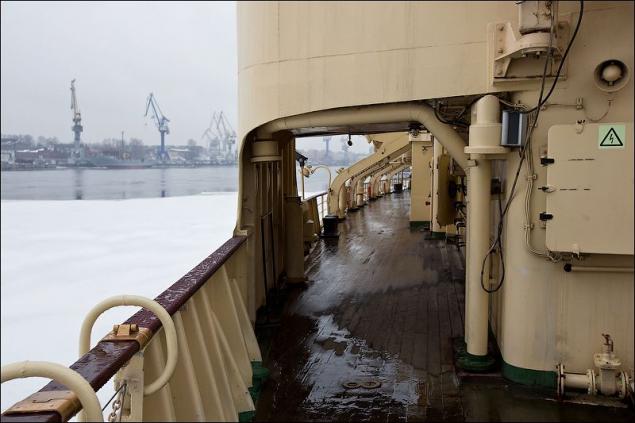
After the war, "Krasin" passed the overhaul and modernization of the shipyards of the GDR. Changes its shape, now it becomes like his grandchildren - diesel-electric icebreakers post-war construction. In the role of icebreaker "Krasin" worked until 1970. Then, giving way to more modern ships, he continued to work already as energoplavbaza Arctic expeditions for exploration of oil Ministry of Geology of the islands of Spitsbergen and Franz Josef Land. In the late 1980s, "Krasin" was purchased by the All-Union Society "Knowledge" and sent to Leningrad to continue his service in the long-deserved and honorable position of the ship-museum. Now berth icebreaker - Lieutenant Schmidt Embankment, at the Mining Institute. Currently is a branch of the Kaliningrad Museum of the World Ocean.
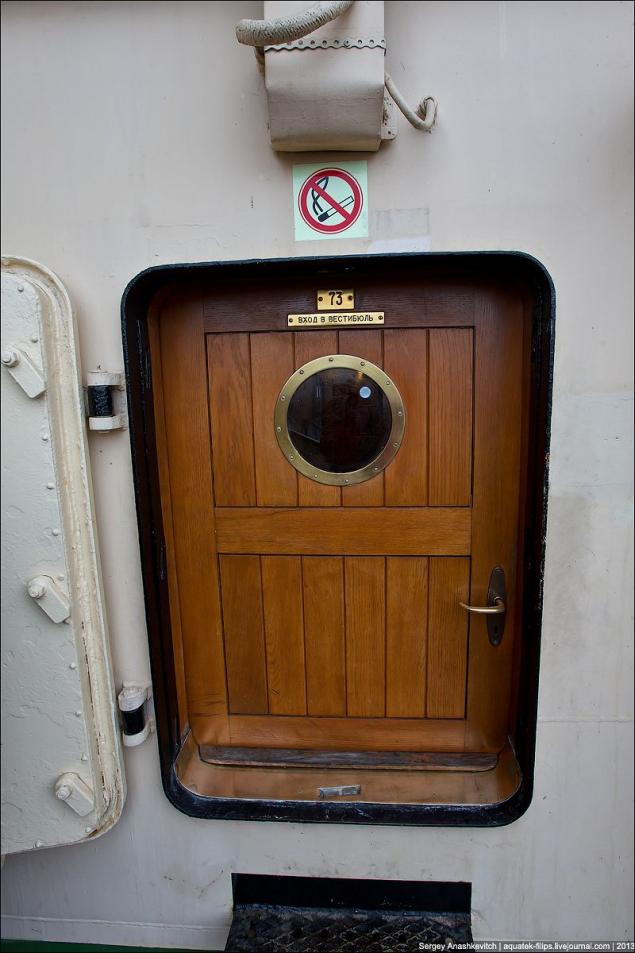
The bridge of the icebreaker. Hence the control of the ship during his many sea voyages.
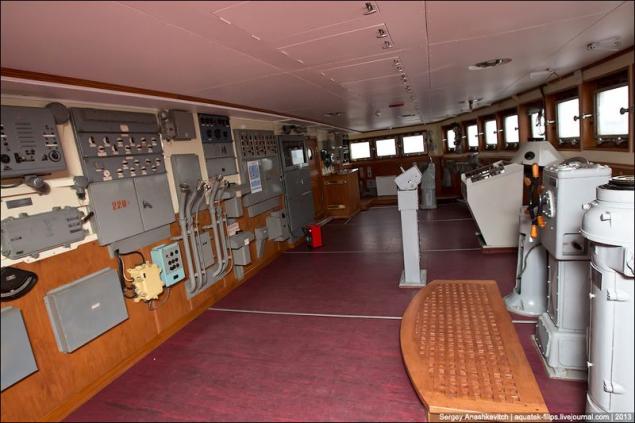
Engine Telegraph
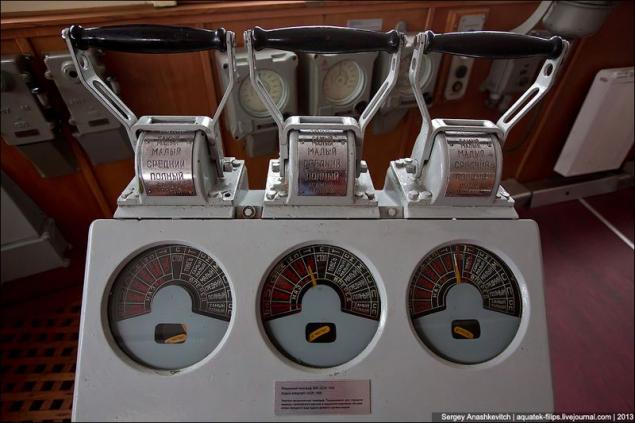
Compass located on the navigating bridge
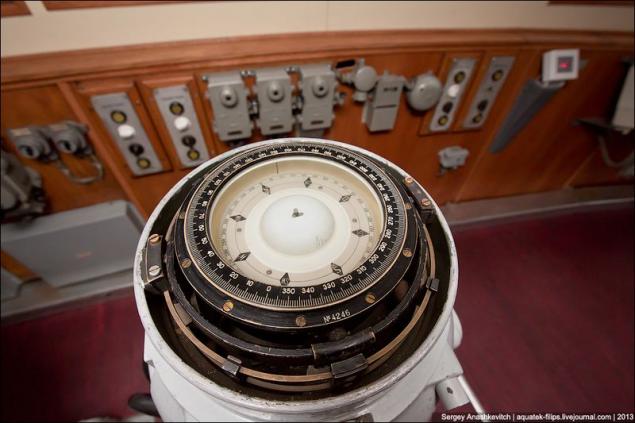
Communication on the bridge. Numerous phones complement the classic Handset
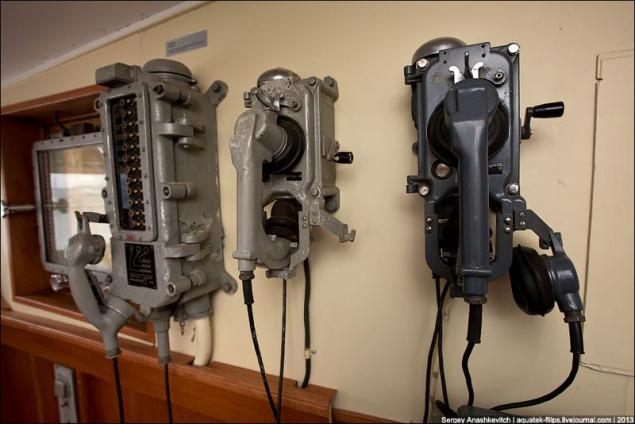
Spuskaemsch in the lower rooms, located on the lower decks

Chart room
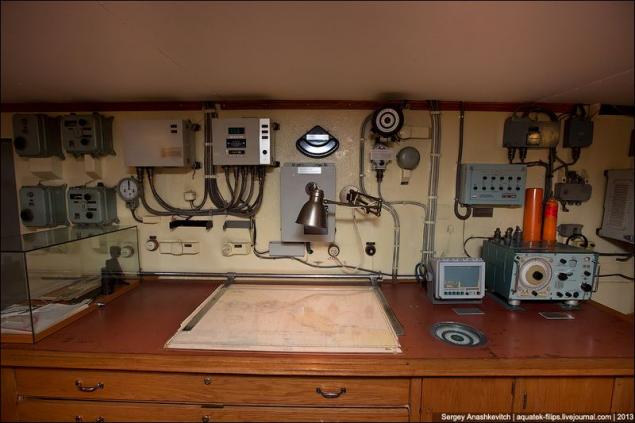
There is plotting and entries are made in the logbook
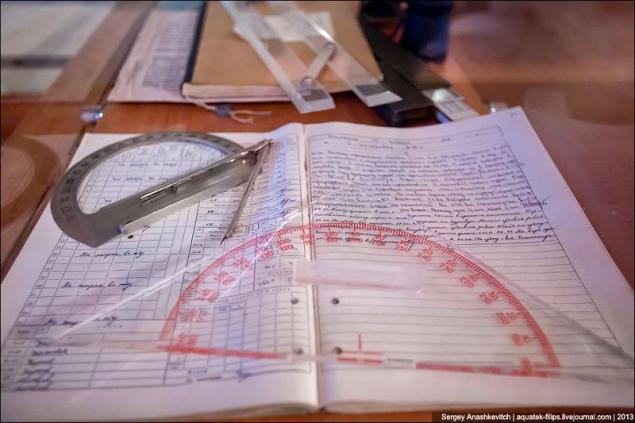
Radio ...
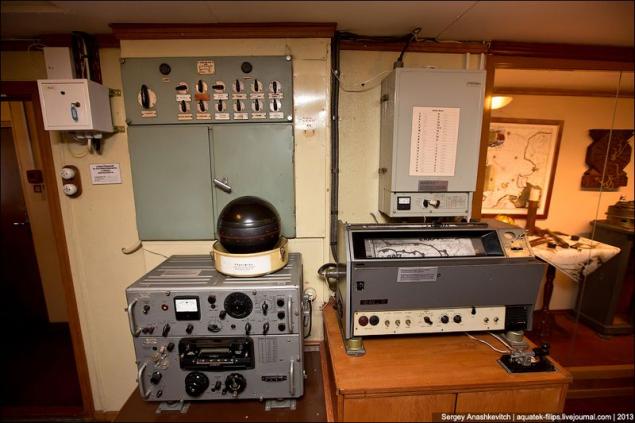
. and earlier precursors

In the words of the guide, it is an interesting device used for guidance and raspiseniya korabloya watches for illiterate sailors who could not read
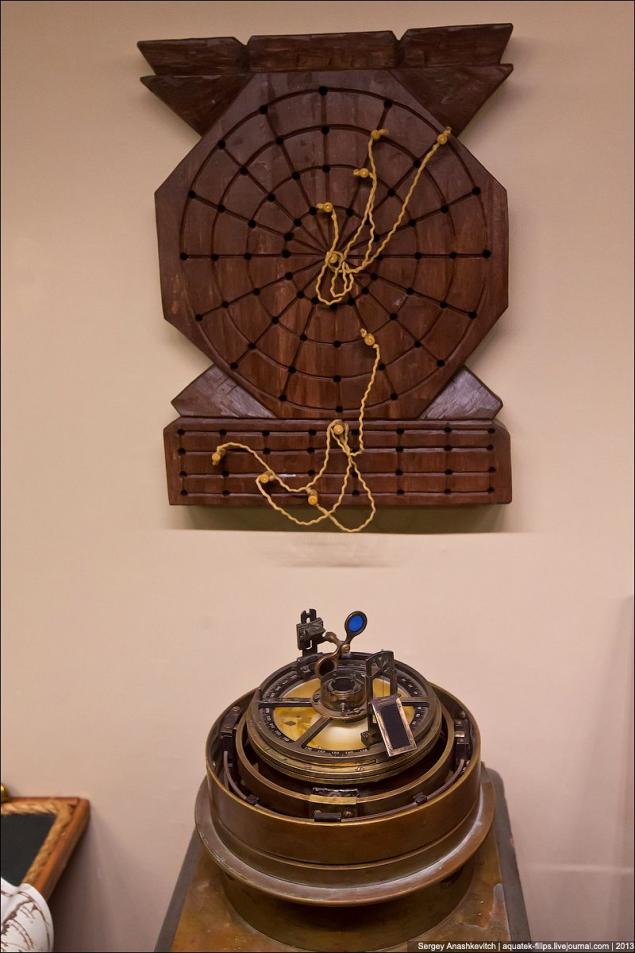
Exposure navigational tools early XX century
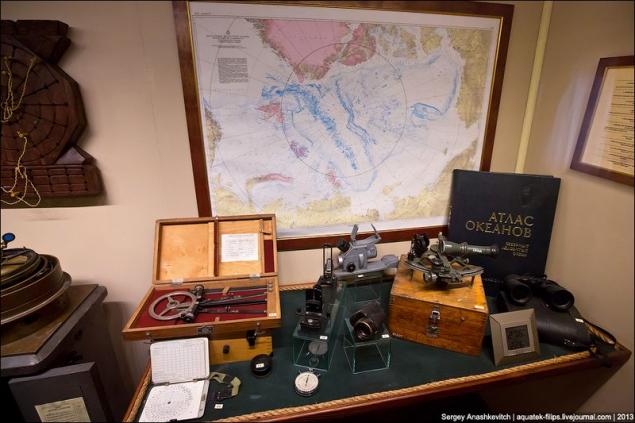
Captain's cabin. The first captain of "Svyatogor" was KK Neupokoev. All in all, for all time on this icebreaker was replaced 43 captain.
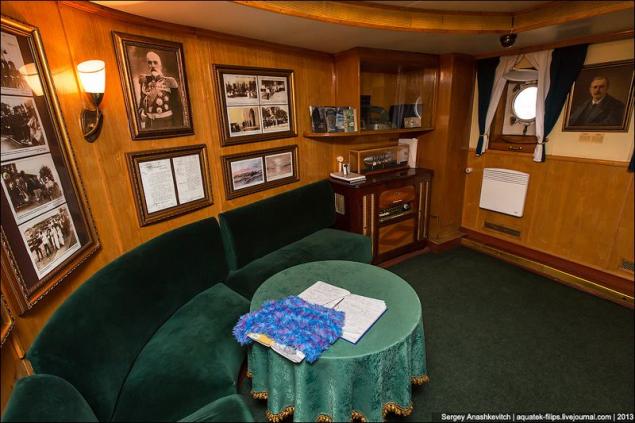
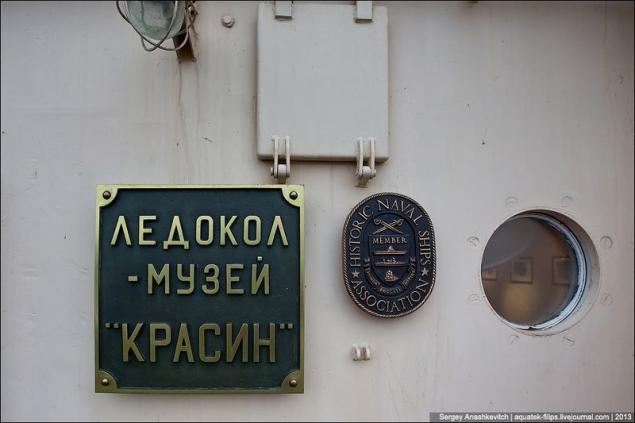
Desk captain
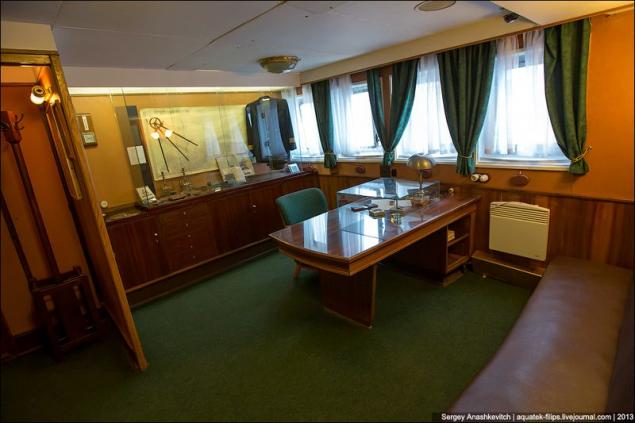
Bookshelf

Radiola, krafin and glass in speitsalnoy stand against pitching
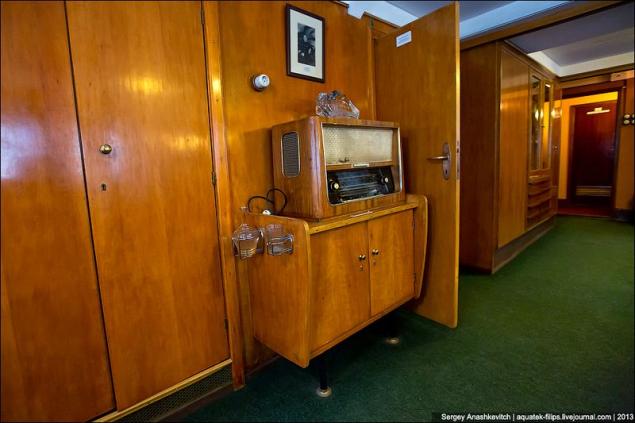
Captain's bed and Handset ekstrenny connection
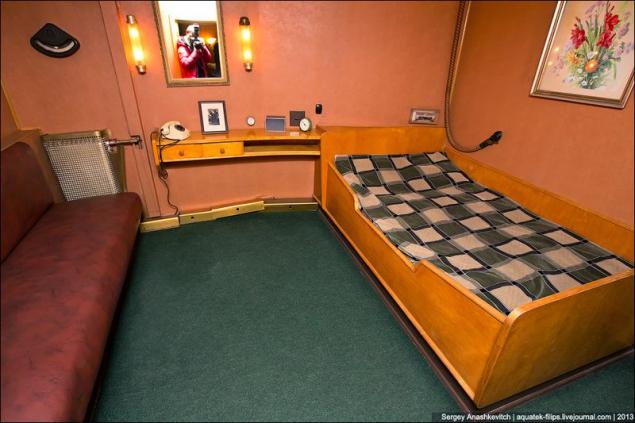
Captain's bathroom. If not for the many pipes on the ceiling, it would have turned the feeling that you are in normal mapped 70s.
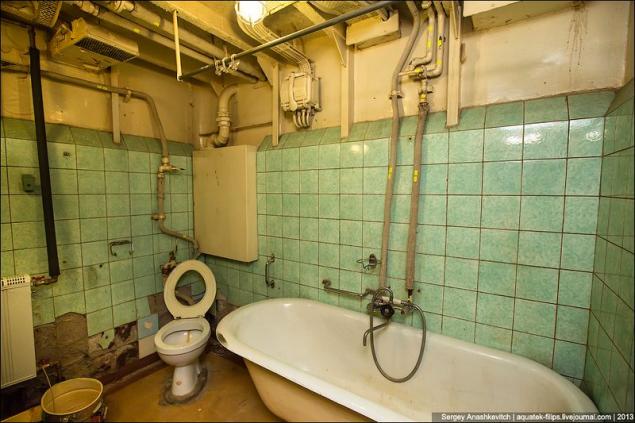
Despite the fact that the icebreaker long been on the eternal docked his ship's bell still shine, even with overcast skies and deck tear to shine
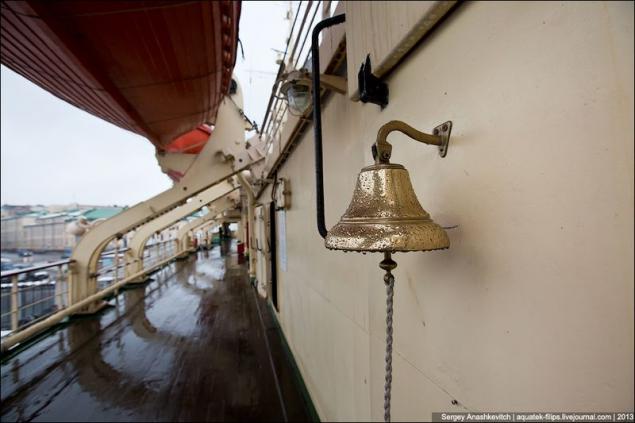
By the way, in 1976 the name "Krasin" was given a new diesel-electric icebreakers, built in Finnish shipyard Wärtsilä commissioned by the Soviet Union. Until 1990, the icebreaker worked in Murmansk, and then was transferred to the port of Vladivostok.
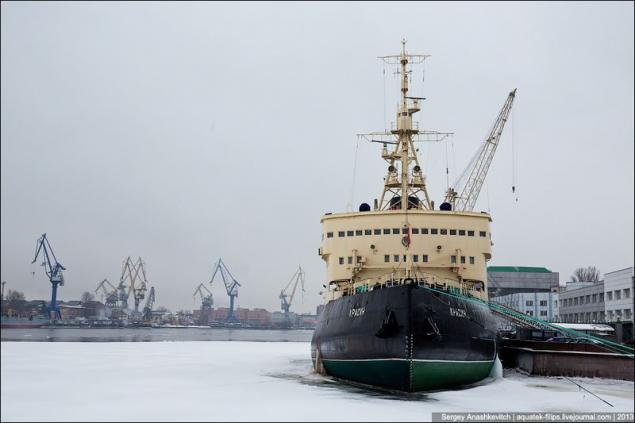
Source: aquatek-filips.livejournal.com

The icebreaker "Krasin" was named in the construction of "Svyatogor". By the end of the first decade of the twentieth century a Russian Arctic icebreaker "Ermak" is not enough to ensure that work in the Arctic. "Ermak" for a long time had no equal among the icebreakers in strength and power. In 1911 - 1912 years on the initiative of the Baltic Fleet Commander Vice-Admiral N. O. Essen question was raised about the need to create the same type of second icebreaker. Then it was developed and terms of reference for the construction of the vessel, but the high cost of the project did not allow the leadership of the Ministry of Marine to place this order. However, in early January 1916 Russia has returned to the issue and it was decided to build an icebreaker with the three screws and a capacity of 10,000 hp, the ability to overcome the ice up to 2 meters thick and in the same year was awarded a contract with the British company "Sir Armstrong Whitworth & Co ". New icebreaker "Svyatogor" was built taking into account operating experience "Ermak" and several of his superior tactical and technical data.

Work on the construction of icebreakers were rapidly. January 12 was ordered material for the keel, and by May had already been collected by one-third the mass of the body, fully developed drawings of the internal arrangement of ship spaces. Just a few months, August 3, the launching of the ship into the water, and two days later the icebreaker escorted eight destroyers towed from Newcastle to Middlesbrough, where he began to put steam engines. October 1, 1916 "Svyatogor" was enrolled in the list of Russian navy in the sea class icebreakers, and March 31, 1917 on the icebreaker St. Andrew's flag was raised. "Svyatogor" was enrolled in the fleet of the Arctic Ocean. Total for the construction, sea trials, intake procedures and enrollment into operation new icebreaker took ... a little more than a year. This is the beginning of the XX century.
It takes only a year and 1 August 1918, the icebreaker "Svyatogor" decide ... flood on the sea route to Arkhangelsk, to block the way for the invaders to the important port of proletarian Russia. After some time, the British raised the Russian icebreaker, and it continues to carry out its functions, but under the English flag.

In 1921, "Svyatogor" bought by the People's Commissariat of Foreign Trade of the RSFSR with the personal participation of the British envoy L.B.Krasina and returns to service in the Russian Navy, and after 7 years it will be renamed in honor of Leonid Krasin

In 1928, the icebreaker "Krasin" became world famous - the same year he took part in the rescue of the Arctic expedition of Umberto Nobile who survived the disaster of the airship "Italia". In 1928, an expedition of 16 people headed by Umberto Nobile took a flight to the North Pole on the new airship, named in honor of his country - "Italy". The airship was launched from Svalbard May 11, 1928, flew over the Pole and landed safely in Alaska. The crew then subdued the North Pole, and "Italy" lay in the opposite direction, and on May 25, communication with the airship suddenly cut short. About what happened, the whole world learned only after 9 days. The crew consisted of 16 people, among them were two foreigners: Swedish geophysicist F. Malmgren and Czech physicist F. Beguonek. To the place of the tragedy began to promote among the heavy ice ships under the flags of different countries, flew airplanes with the international crew on board. In total, the rescue operation involved at least one and a half thousand people - nothing like this has not happened in the Arctic. It was the first in the history of mankind an international rescue operation, which involved 18 ships and 21 aircraft from six countries. Norwegian scientist, once a friend and associate, and then a rival and foe Nobile, Roald Amundsen to learn about the disaster, immediately went to the rescue of polar explorers. Unfortunately, the rescue mission was not without casualties. Killed while returning home three Italian pilot was missing and the French-Norwegian crew seaplane "Latham-47", carrying the Roald Amundsen. Nobile himself from the camp brought a Swedish pilot Lundborg, who managed the under-ice. However, the second flight Lundborg was not as successful. The plane crashed, and he was waiting for the pilot to help a drifting ice floe. Lundborg was able to save only two weeks later. The rest of the group was rescued by crew of the icebreaker "Krasin". In the memory of the rescue expedition on the icebreaker "Krasin" kept the shell of the airship "Italia" Umberto Nobile

Since the beginning of the war icebreakers steel warships, which is responsible task of ensuring wiring convoys in ice conditions. About the significance attached icebreaking fleet, we can be judged from the fact that Hitler had promised to award the Iron Cross - the highest award in Germany - the one who will sink or will damage the icebreaker. However, the Soviet Union, has the most powerful icebreaker fleet, its task decided and Nazi Germany did not manage to disorganize any escort operation or job Glavsevmorputi. During the war, the icebreaker "Krasin" repeatedly exercised wiring convoys carrying military supplies for the Northern Sea Route. The most important caravan, which was held thanks to the ice-breaker was the convoy PQ-15 - the largest of all the convoys during the war. Its members included 26 transports.

After the war, "Krasin" passed the overhaul and modernization of the shipyards of the GDR. Changes its shape, now it becomes like his grandchildren - diesel-electric icebreakers post-war construction. In the role of icebreaker "Krasin" worked until 1970. Then, giving way to more modern ships, he continued to work already as energoplavbaza Arctic expeditions for exploration of oil Ministry of Geology of the islands of Spitsbergen and Franz Josef Land. In the late 1980s, "Krasin" was purchased by the All-Union Society "Knowledge" and sent to Leningrad to continue his service in the long-deserved and honorable position of the ship-museum. Now berth icebreaker - Lieutenant Schmidt Embankment, at the Mining Institute. Currently is a branch of the Kaliningrad Museum of the World Ocean.

The bridge of the icebreaker. Hence the control of the ship during his many sea voyages.

Engine Telegraph

Compass located on the navigating bridge

Communication on the bridge. Numerous phones complement the classic Handset

Spuskaemsch in the lower rooms, located on the lower decks

Chart room

There is plotting and entries are made in the logbook

Radio ...

. and earlier precursors

In the words of the guide, it is an interesting device used for guidance and raspiseniya korabloya watches for illiterate sailors who could not read

Exposure navigational tools early XX century

Captain's cabin. The first captain of "Svyatogor" was KK Neupokoev. All in all, for all time on this icebreaker was replaced 43 captain.


Desk captain

Bookshelf

Radiola, krafin and glass in speitsalnoy stand against pitching

Captain's bed and Handset ekstrenny connection

Captain's bathroom. If not for the many pipes on the ceiling, it would have turned the feeling that you are in normal mapped 70s.

Despite the fact that the icebreaker long been on the eternal docked his ship's bell still shine, even with overcast skies and deck tear to shine

By the way, in 1976 the name "Krasin" was given a new diesel-electric icebreakers, built in Finnish shipyard Wärtsilä commissioned by the Soviet Union. Until 1990, the icebreaker worked in Murmansk, and then was transferred to the port of Vladivostok.

Source: aquatek-filips.livejournal.com







